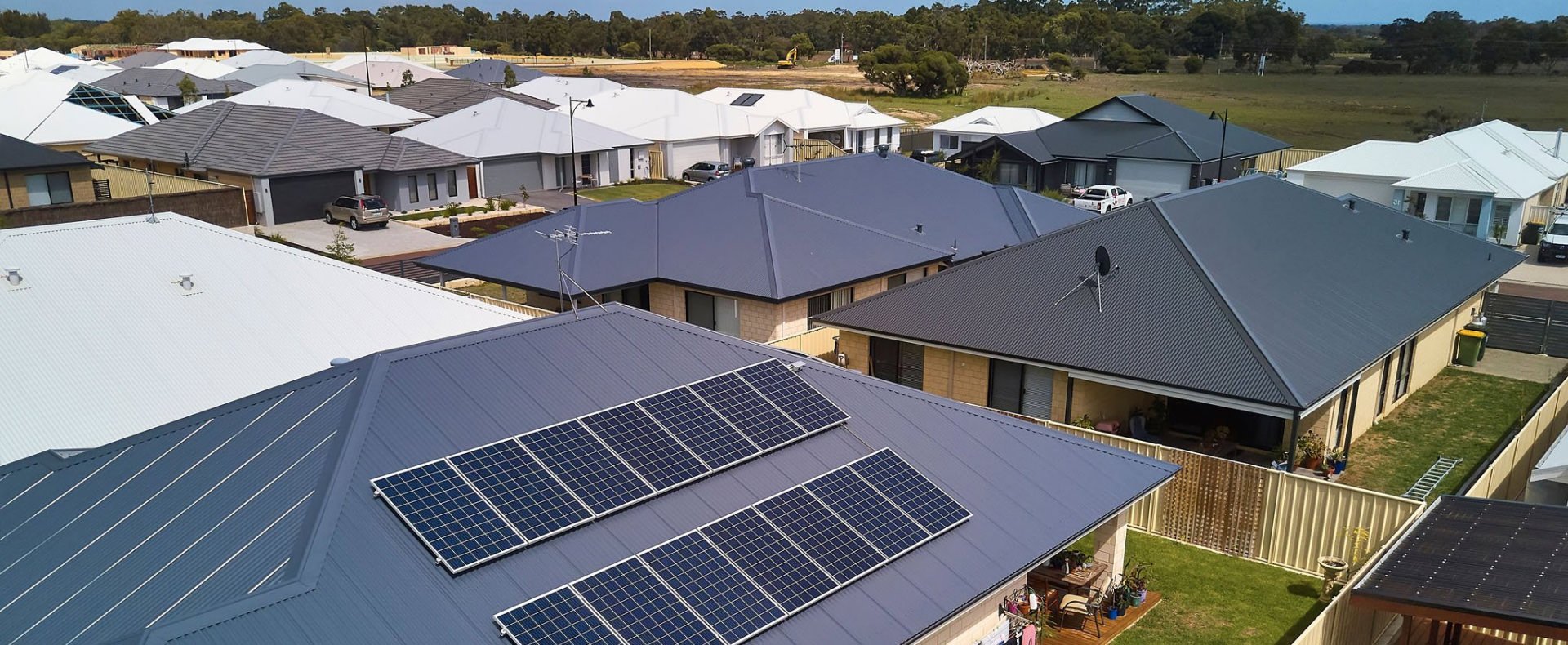Synergy’s Midday Saver tariff offers three separate energy rates based on peak, off-peak, and super off-peak periods. By shifting your energy consumption to off-peak periods, when rates are cheapest, you can save on power bills and take pressure off the main electrical grid.
For solar + battery system households, the Midday Saver has vast potential when you understand how to make the tariff work in your favour. Through system monitoring and load shifting, solar users are in a good position to benefit from the tariff.
Time of use electricity (TOU) tariffs explained
Time of use electricity (TOU) tariffs charge different amounts for energy depending on the time of day. Cost varies based on energy demand levels, referred to as “peak” and “off-peak” periods. This aims to encourage Australian households to focus energy use on off-peak times when electricity is cheapest. This reduces strain on the main electrical grid throughout peak periods. When the grid is under pressure, it increases the likelihood of power outages and blackouts.
In WA, energy is most expensive between 3 pm and 9 pm, when electricity use is at its highest. This is the time we usually come home from work or school and turn on the lights, watch TV, run a load of laundry, and crank the heating or cooling. Single-rate tariffs charge the same rate for energy all day, regardless of time. With TOU tariffs, households make slight changes in their energy usage and reap the rewards of cheaper energy.
TOU tariffs are also game-changers for solar users. Using your inverter app, you could maximise your energy savings by planning around peak and off-peak periods.
What is the Synergy Midday Saver?
The Synergy Midday Saver is a TOU tariff that offers three energy rates corresponding to three time periods. These periods are peak (3 pm – 9 pm), off-peak (9 pm – 9 am), and super off-peak (9 am – 3 pm). When your household uses energy, a smart meter or advanced metering infrastructure (AMI) meter records the amount and time of day to accurately determine cost. Prices start as low as 8 cents per kilowatt hour (kWh) during super off-peak and rise to 50 cents per kWh at peak periods.
Benefits of the Midday Saver
Energy users benefit from the Midday Saver when they shift electricity consumption toward off-peak and super off-peak periods. The rate is lower during those periods than the regulated residential tariff charges (30c per kWh regardless of time) and may result in significant reductions in energy bills.
By utilising Midday Saver, you’d also help ease pressure on the main electrical grid. Nobody likes blackouts, and maintaining grid stability is vital to protecting households from sudden power loss. Focusing energy use during off-peak hours lightens the load and reduces potential grid complications.
Fees and charges
There are a few fees and charges associated with Synergy’s Midday Saver. Firstly, if you don’t already have a compatible energy meter, you’ll need to install one. Charges also apply to reconfigure existing meters. Secondly, tariff rates aren’t fixed and could fluctuate with demand. The electricity charge during peak hours is higher than the standard tariff rate, so you may experience higher costs if you’re not planning energy use correctly.
Lastly, if you’re already on a tariff plan, you might experience termination fees when switching to Midday Saver. Always check what charges incur if you make the switch so you’re not caught out with unexpected fees.

How does the Synergy Midday Saver affect solar owners?
Solar + battery users stand to benefit most from the Midday Saver. Households use energy generated from solar panels, and excess is stored in the battery for when solar panels stop generating power, like at night. Using your inverter app, you can set your battery to charge from the grid during off-peak hours when electricity is cheapest, then draw from your battery at peak periods. This way, your household makes the most of cheaper rates and avoids high peak-hour prices. Electric vehicle (EV) owners can also save by setting their vehicle to charge from the grid during off-peak or super off-peak times.
How to make the most of super off-peak periods
There are a number of ways you can make the most of super off-peak periods. Switching tariffs to save money means you also need to plan effectively. Optimising your electricity consumption and close monitoring will make the Midday Saver work for you.
Know how much energy you’re using
The most important step to making the most of the Midday Saver is understanding how much energy your household consumes and where it’s going. This is where Plico helps out. Our app shows you where and when your household uses power, as well as where it’s coming from. Knowing which appliances or activities use the most energy allows you to plan your consumption more efficiently and reduce your usage during peak periods. Even smaller appliances like lights and power points add up on the bill when they’re being used inefficiently. Ensure appliances are unplugged when not in use to reduce unnecessary energy drains during peak hours.
Load shifting
Load shifting is when solar households concentrate their power usage during the day, before 3pm. This is when solar panels are generating the most energy and before the spike in energy demand from the grid. Although it’s impossible to shift all of your energy consumption, your power bill will benefit from running high-usage appliances during those hours.
If your washing machine or dishwasher has a delay function, you can set it to run between 9 am and 3 pm. For climate control, consider setting your air conditioner to cool or heat the home a few hours before peak periods, or utilise it during off-peak times between 9 pm and 9 am. Set pool pumps and cleaners to run in the middle of the day, and turn off hot water systems in the evening and on again in the morning. You can use timers to ensure you never miss the switch.
Case Study
Plico member Craig uses his solar + battery system to take advantage of the Midday Saver. Plico’s app allows him to see his energy use in real time and identify where automated systems, like his sewerage pump, come on and off. Graig charges his battery from the grid early in the day and draws from it later when grid electricity is most expensive. By the time Craig has used up the energy in his battery, he’s usually back to off-peak tariffs for his overnight usage. He makes the most of his solar panels by using as much energy as he can in the middle of the day.
Craig really got to know the tariff and planned around it to save money. Plico’s inverter app has helped him load shift more easily and optimise his energy usage. As someone with existing solar panels and low energy bills, switching tariffs allowed Craig to get a better return on investment for his solar battery. He’s proof that with a little planning, you can make big savings.
“If you know your tariff, and you can understand when the tariff is cheaper vs more expensive, you can really save when you plan around it. Work your loads into when the tariff is cheap. This is ‘load shifting’, and the Plico app makes it much easier to know when to purchase power off the grid and how to optimise your energy usage with your battery. The graphics are great.”
Plico supports its members making decision decisions about switching tariffs by providing detailed analysis and projections of savings. Another savvy Plico member making big savings is Barry from Baldivis. Barry has saved an incredible $416 in nine months after switching to the Midday Saver. This is on top of the savings he already makes from his Plico solar + battery system.
How to switch to the Midday Saver Tariff
If you’re interested in switching to Synergy’s Midday Saver, you need to request the change. Tariffs are automatically set by your retailer, so you’ll either need to speak with Synergy directly or go through their online portal. Once your request is received, Synergy sends a professional to your property to reprogram or replace your meter if required.
If you’re in the market for a solar battery, switching tariffs could make them more economically viable. Plico’s comprehensive monitoring app makes load shifting easy, so you know how your household uses energy. We continuously monitor your system and energy consumption so we can provide estimates on how much you save when you switch tariffs.
To learn more about your potential solar savings, chat with our switched-on team.


